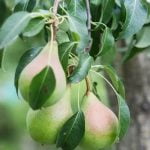Are you looking for ideas for triangle shaped gardens? Triangle-shaped gardens offer a unique and creative opportunity to maximize your outdoor space. The triangular layout presents a challenge, but also an opportunity to showcase your creativity and design skills. In this article, we will explore various ideas and tips for making the most of triangle-shaped gardens, from utilizing the boundaries to selecting the right plants and incorporating eye-catching features.
Triangle-shaped gardens may seem challenging to work with at first, but they offer a distinct beauty and uniqueness that can be truly captivating. The triangular layout allows for endless possibilities in terms of design, layout, and plant selection. By embracing the potential of triangle-shaped gardens, you can create a visually stunning and functional outdoor space that stands out from traditional garden layouts.
In this article, we will delve into various aspects of designing and maintaining triangle-shaped gardens. From utilizing the boundaries effectively to maximizing visual appeal with unique shapes and pathways, we will provide practical tips and inspiring examples to help you unleash the full potential of your triangle-shaped garden. Whether you have a small or large triangular space, there are plenty of creative ideas that you can implement to transform it into a beautiful and inviting outdoor retreat.
Utilizing the Boundaries
When it comes to triangle-shaped gardens, one of the biggest challenges lies in making the most of the unique boundaries. Unlike traditional square or rectangular gardens, triangular spaces offer a different set of opportunities and limitations for garden design. With careful planning and creative thinking, however, these boundaries can be utilized to create a stunning and functional outdoor space.
Maximizing Space With Vertical Elements
One effective way to make the most of a triangle-shaped garden is by utilizing vertical elements such as trellises, arbors, and tall planters. These features not only add height and dimension to the space but also provide opportunities for vertical gardening. Vining plants, climbers, and tall grasses can be trained to grow upwards, effectively maximizing space in a limited area.
Creating Levels and Zones
Another strategy for utilizing the boundaries of a triangle-shaped garden is to create levels and zones within the space. By incorporating raised beds, retaining walls, or terraced areas, you can define different areas for planting, relaxing, or entertaining. This not only adds visual interest to the garden but also allows for better organization and use of the triangular space.
Working With Angles and Diagonal Lines
The unique shape of a triangle lends itself well to creating dynamic pathways and geometric designs within the garden. Instead of sticking to straight lines and right angles, consider working with diagonal lines that follow the natural angles of the space. Curved pathways or angular bed layouts can add an element of visual intrigue while maximizing the usable planting area within the triangular boundaries.
By embracing these strategies for utilizing the boundaries of a triangle-shaped garden, you can transform what may initially seem like a challenging space into a dynamic and visually appealing outdoor oasis. With careful planning and creative thinking, there are endless possibilities for making the most of a triangular garden’s unique shape.
Triangle Garden Design
When it comes to designing a triangle-shaped garden, the unique layout provides an opportunity to create visual interest and appeal. By maximizing the potential of the triangular space, you can create a stunning and captivating garden that stands out from traditional square or rectangular designs.
Pathways and Shapes
One way to maximize visual appeal in a triangle-shaped garden is by incorporating unique shapes and pathways. Consider creating curved or diagonal pathways that lead the eye through the space, drawing attention to different areas of the garden. Additionally, using geometric shapes such as triangles, circles, or zig-zags can add visual interest and create a sense of movement within the garden.
Focal Points and Landscaping
Incorporating focal points such as statues, water features, or seating areas can further enhance the visual appeal of a triangle-shaped garden. Placing these elements at strategic points within the space can draw attention and create a sense of balance. When selecting plants for landscaping, consider using varying heights and textures to add depth and dimension to the garden.
Creating Visual Layers
Another effective technique for maximizing visual appeal in a triangle-shaped garden is by creating layers within the space. By utilizing taller plants at the back or center of the triangular area, with shorter ones towards the front or edges, you can create depth and an illusion of larger space. Adding trellises or vertical planters can also help in creating vertical layers to maximize visual impact.
By focusing on unique shapes, pathways, focal points, landscaping techniques, and visual layers within a triangle-shaped garden design, you can create a visually stunning outdoor space that is both aesthetically pleasing and functional. These elements will help showcase your creativity while making the most of your triangular gardening plot.
Plant Selection
When it comes to planning a triangle-shaped garden, thoughtful plant selection is crucial to making the most of the unique layout. The triangular shape presents both opportunities and challenges when it comes to choosing the right plants to fit the space. With some creativity and strategic planning, a triangle garden can be transformed into a stunning oasis that maximizes its visual appeal.
First and foremost, it’s important to consider the size and scale of your triangle garden when selecting plants. Because triangular gardens often have narrow points and wider bases, it’s essential to choose plants that will complement these dimensions. Taller plants can be placed at the back or center of the wide base to create depth and height, while low-growing or creeping plants can be used to soften the edges and fill in narrow spaces.
Additionally, considering the sun exposure in different parts of the triangle is key to successful plant selection. Be mindful of how sunlight filters through the space throughout the day, as this will impact which plants will thrive in each area. For example, sun-loving plants should be placed in areas that receive ample sunlight, while shade-tolerant varieties can be positioned in areas with less direct light.
To add visual interest and maximize use of space in a triangle-shaped garden, consider incorporating a mix of colors, textures, and growth habits among your plant selections. This may involve choosing flowering plants for seasonal color bursts, foliage with varying shapes and hues for year-round interest, or climbing vines to add vertical dimension.
| Plant Selection Considerations | Details |
|---|---|
| Tailoring plant selection to fit triangular layout | Consider size and scale of garden; place taller plants at wide base for height; low-growing or creeping plants for narrow spaces |
| Sun exposure considerations | Position sun-loving plants in sunlit areas; Choose shade-tolerant varieties for spots with less direct light |
| Visual interest through variety | Incorporate mix of colors, textures, flowering plants for seasonal blooms, diverse foliage for year-round appeal |
Creative Features
Triangle-shaped gardens offer a unique canvas for creating stunning and eye-catching features that can enhance the overall visual appeal of the space. When designing a triangle-shaped garden, it’s important to consider how to make the most of this unconventional layout by incorporating creative and focal points elements.
One idea for triangle shaped gardens is to create a striking focal point at the apex or center of the garden. This could be a beautifully crafted sculpture, a water feature, or a carefully placed seating area that draws the eye and creates a sense of balance in the space. Additionally, utilizing vertical elements such as trellises or arbors can add height and dimension to the garden, making it feel more open and inviting.
Incorporating color and texture through plants is another essential aspect of creating eye-catching elements in a triangle-shaped garden. Using bold, vibrant blooms or ornamental grasses can create visual interest while also adding depth and movement to the space. Additionally, incorporating pathways with unique shapes or materials can lead the eye through the garden and create an element of surprise around every corner.
Another creative feature to consider for triangle shaped gardens is using lighting to highlight certain focal points during nighttime hours. Strategically placed outdoor lighting can illuminate key areas such as sculptures, water features, or specific plants, adding another layer of visual interest to the garden.
| Ideas for Triangle Shaped Gardens | Creative Features |
|---|---|
| Creating striking focal points at apex/center | Focal Point Elements |
| Incorporating color and texture through plants | Colorful Plant Selection |
| Utilizing lighting to highlight focal points at night | Nighttime Illumination |
Practical Considerations
When it comes to designing a triangle-shaped garden, practical considerations are crucial in ensuring that the space is not only visually appealing but also functional and accessible. Here are some ideas for maintaining functionality and accessibility in a triangular garden:
- Utilize the boundaries: One of the key practical considerations in a triangle-shaped garden is making the most of the boundaries. Use vertical elements such as trellises or espaliered trees to maximize growing space without encroaching on walkways or seating areas.
- Implement unique pathways: In a triangular garden, traditional straight pathways may not be the best option. Consider using curved or meandering pathways that flow with the natural shape of the space, creating visual interest while allowing for easy navigation through the garden.
- Incorporate multi-functional furniture: When it comes to seating and outdoor furniture, choosing pieces that serve multiple purposes can help maximize space in a triangle-shaped garden. Look for benches with built-in storage, or tables that can double as planters to make the most of limited space.
- Consider accessibility and maintenance: Ensure that there is easy access to all areas of the garden for planting, weeding, and maintenance. Avoid cramming too many plants into tight spaces, and leave room for tools and equipment to maneuver around the garden.
By carefully considering these practical aspects, you can create a triangle-shaped garden that not only looks beautiful but also functions seamlessly for both you and your visitors. These ideas will help you make the most out of an unconventional garden shape while maintaining its functionality and accessibility.
Maintenance Tips
When it comes to maintaining a triangle-shaped garden, there are several key considerations to keep in mind in order to ensure that the space looks its best year-round. From regular upkeep to strategic planning, the following maintenance tips can help you make the most of your triangular garden:
- Regular pruning and trimming: Given the unique shape of a triangle garden, it’s important to regularly trim back any overgrown plants or hedges that may encroach on pathways or obstruct sightlines. This will help maintain the clean lines and visual appeal of the space.
- Weeding and mulching: Keeping on top of weed control is essential for any garden, but especially so for a triangular one where space may be at a premium. Regular weeding and mulching can help prevent weed growth and retain soil moisture, keeping your garden looking tidy and healthy.
- Seasonal planting and maintenance: Be mindful of the changing seasons and how they may impact your triangular garden. Consider planting seasonal flowers or shrubs to ensure year-round color and interest, and be prepared to adjust maintenance tasks accordingly as the weather changes.
In addition to these general maintenance tasks, it’s also important to consider the specific needs of your plants within a triangular layout. Some plants may require more sun or shade than others, while certain areas of the garden may be more prone to drainage issues. By staying attuned to these factors and adjusting your maintenance approach accordingly, you can ensure that your triangle-shaped garden remains vibrant and well-kept throughout the year.
Ultimately, with some careful planning and ongoing attention, a triangle-shaped garden has the potential to be a stunning focal point in any outdoor space. By implementing these maintenance tips, you can keep your garden looking beautiful and inviting no matter the season.
Inspiring Examples
Triangle-shaped gardens offer a unique and exciting opportunity for creative landscaping. The unconventional shape of these gardens opens up endless possibilities for design and layout that can truly make a statement in any outdoor space. If you’re looking for inspiration for your triangle-shaped garden, consider the following stunning examples to ignite your imagination.
One creative idea for triangle shaped gardens is to incorporate diagonal pathways or walkways that lead the eye through the space in an interesting and dynamic way. By using angular lines, you can create a sense of movement and flow within the garden, drawing attention to different focal points and features. Additionally, consider adding a central focal point such as a sculpture, fountain, or seating area to anchor the space and provide visual interest.
Another inspiring approach is to take advantage of the boundaries of the triangular shape by creating layered planting beds that follow the natural lines of the space. This can add depth and dimension to the garden while maximizing planting space. Consider mixing different heights, textures, and colors of plants to create a visually striking display that complements the unique shape of the garden.
Lastly, draw inspiration from contemporary landscape design by incorporating geometric patterns or minimalist elements into your triangle-shaped garden. Think about utilizing clean lines, simple shapes, and modern materials such as metal or concrete to create a sleek and stylish look. A well-placed piece of outdoor furniture or an architectural feature can also add an unexpected touch of elegance to the space.
These inspiring examples demonstrate how triangle-shaped gardens can be transformed into visually stunning outdoor spaces that are both functional and beautiful. Whether you’re working with a small urban plot or a larger suburban yard, there are countless ways to make the most of this unique layout and unleash your creativity in designing a triangle-shaped garden that’s truly one-of-a-kind.
Conclusion
Triangle-shaped gardens offer a unique opportunity for creative and visually appealing landscaping. By utilizing the boundaries effectively and incorporating unique shapes, pathways, and plants, these gardens can become stunning focal points in any outdoor space. Creative features such as focal points and eye-catching elements can further enhance the beauty of triangle-shaped gardens, while practical considerations ensure that they remain functional and accessible.
When it comes to maintaining triangle-shaped gardens, there are several tips that can help keep them looking their best year-round. From regular pruning and weeding to proper irrigation and soil maintenance, these gardens require careful attention to detail to ensure their continued beauty. However, the effort is well worth it for the striking results that can be achieved in a well-maintained triangle-shaped garden.
For anyone seeking inspiration for their own triangle-shaped garden, there are countless stunning examples to draw ideas from. Whether it’s through online sources, gardening books, or even visiting public gardens with triangular designs, there is no shortage of ways to find creative inspiration for transforming a triangular outdoor space into a thing of beauty. With endless potential for creativity and beauty, embracing the unique opportunities offered by triangle-shaped gardens is an exciting prospect for any gardening enthusiast.
Frequently Asked Questions
What Can You Do With a Triangle Shaped Garden?
A triangle-shaped garden offers a unique opportunity to create an eye-catching landscape design. You can use the shape to your advantage by planting taller plants at the back and gradually decreasing in height towards the front.
How Do You Plan a Triangular Garden?
Planning a triangular garden involves carefully considering the dimensions and angles of the space. It’s important to measure accurately and decide on the focal points of your design. You’ll also need to determine which plants will thrive best in each section of the triangle.
How Do You Landscape a Triangle Yard?
When landscaping a triangle yard, it’s essential to take into account its unique shape. You can create visual interest by incorporating diagonal lines, varying heights of plants, and strategic placement of pathways or hardscape elements. Additionally, consider how you want to utilize the space – whether for entertaining, gardening, or relaxation – when designing your landscape.

Welcome to my gardening blog! I am passionate about plants and enjoy sharing my knowledge and experiences with others. In this blog, I will write about everything related to gardening, from tips on how to get started to updates on my own garden projects.





